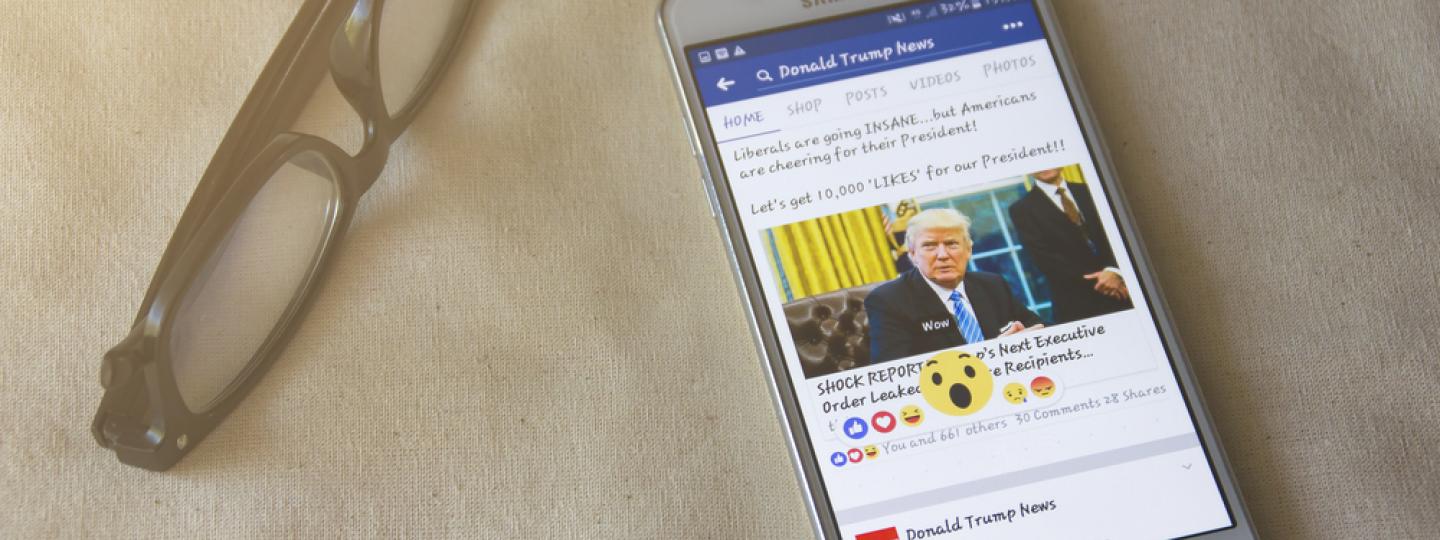As of this week, fact-checking outlets working with Facebook can debunk and slow the spread of headlines that are false even if the whole story isn’t — a change that adds nuance to the types of misinformation the platform is asking fact-checkers to flag.
On Monday, the technology company told Poynter it had rolled out the new capability to its 33 fact-checking partners around the world. Now fact-checkers can either rate an entire story or just a headline as false, although the latter is demoted in News Feed less than the former. (Disclosure: Being a signatory of the International Fact-Checking Network’s code of principles is a necessary condition for joining the project.)
“We’re always soliciting feedback from our fact-checking partners, and as we see new gray areas that warrant clarification of our program, we try to address those with updated guidance and processes,” Facebook spokeswoman Lauren Svensson told Poynter in an email. “We hope this new rating option will give more clarity to fact-checkers and publishers alike.”
The new rating is a result of ongoing confusion among fact-checkers about how to tackle stories that could contain valid factual or analytical content, but are posted with an inaccurate headline on Facebook. That confusion came to head in mid-September, when The Weekly Standard Fact Check, one of the company’s fact-checking partners, rated a ThinkProgress story about Brett Kavanaugh as false, downranking it in News Feed.
The incident hinged on the use of the word “said” in a headline by ThinkProgress and set off a firestorm. ThinkProgress and other left-leaning news sites called Facebook a censor and accused it of catering to conservatives. The Weekly Standard claimed that false headlines are often enough to misinform people on Facebook and that it would withdraw the flag if ThinkProgress changed its headline (it didn’t).
The real problem is not "Is Facebook censoring progressives" but "Should Facebook ask fact-checking partners to flag stories based on headlines?" and "How Literally?" We know a lot of fakes travel off of a headline alone. Not acting on those opens a pretty big loophole.
— Alexios (@Mantzarlis) September 11, 2018
Svensson said that a false headline rating will not demote posts to the same degree as an outright false rating, which BuzzFeed News reported last year limits the future spread of the content by up to 80 percent. Poynter asked for a more concrete metric on how much a false headline rating would demote posts but she declined to provide one.
The new rating comes after several other recent changes to Facebook's fact-checking project, including the expansion of fact-checkers’ debunking capabilities to photos and video and the inclusion of artificial intelligence to automatically detect duplicate fakes. Adrien Sénécat of Les Décodeurs, one of Facebook’s fact-checking partners in France, told Poynter that while his team probably won’t use the rating a lot, the move should prove helpful in going after clickbait headlines they weren’t able to fact-check before.
“I think it might prove useful in some cases when some websites use headlines to spread false claims but back themselves with more of an article body that doesn’t say the same thing,” he said in an email. “I just think that we fact-checkers should only use this rating when it really appears that the title is false, not just when it is a bit exaggerated.”
Aside from giving fact-checkers more power to determine what gets traction on Facebook, the company’s addition of a false headline rating seems to answer a more fundamental question that Poynter’s Alexios Mantzarlis asked last month: Is the purpose of Facebook’s fact-checking “to clean up the junky viral hoaxes about sharks swimming up interstates” or “to target inaccurate information in all its guises?”
This move points to the latter.
Update: The lead of this story has been updated to better explain the change.







